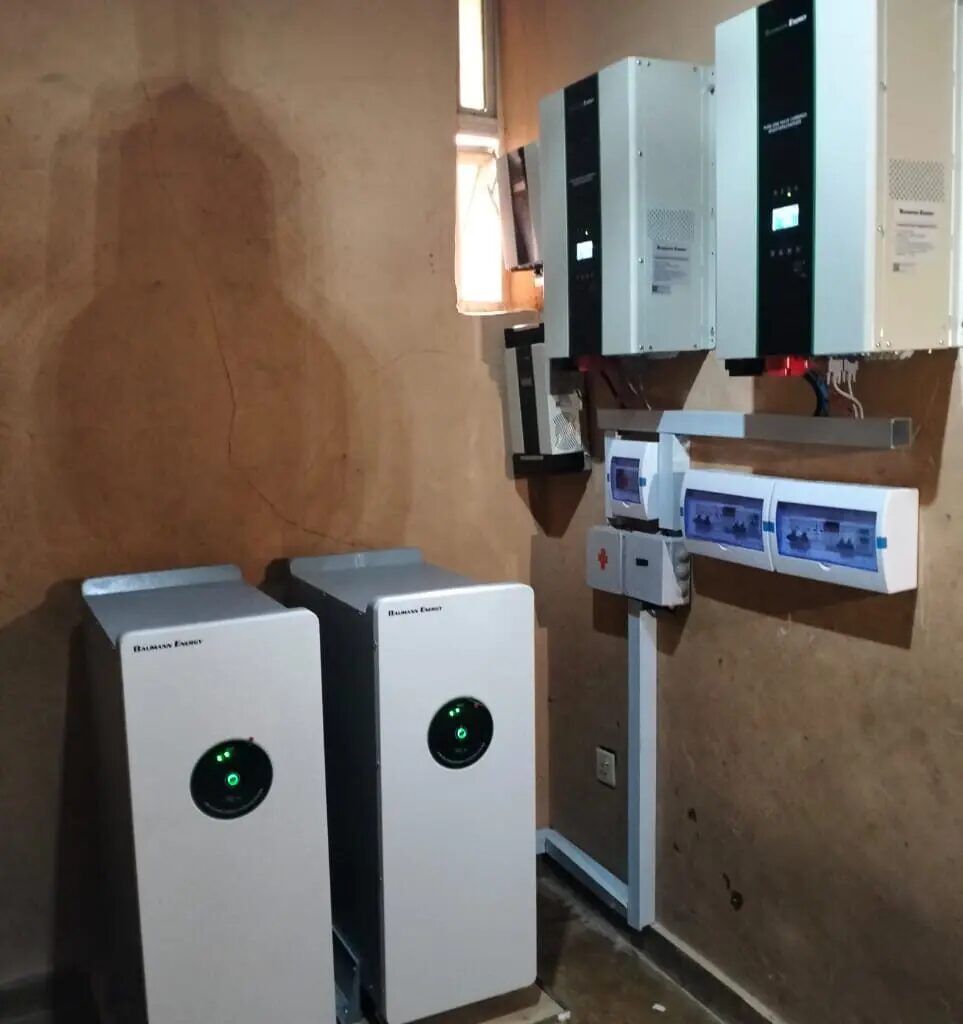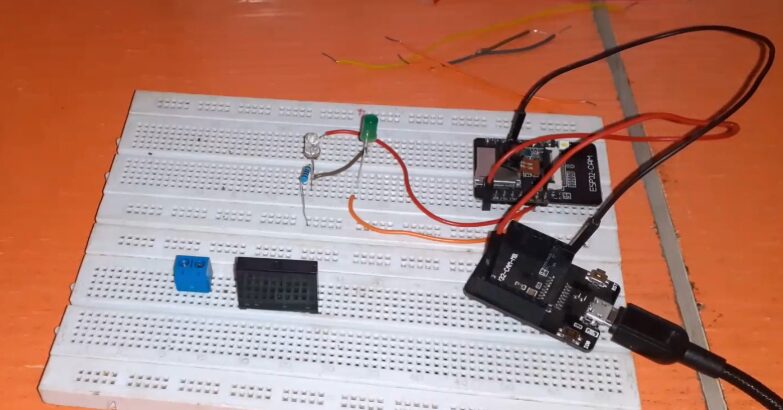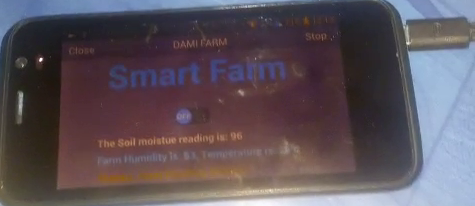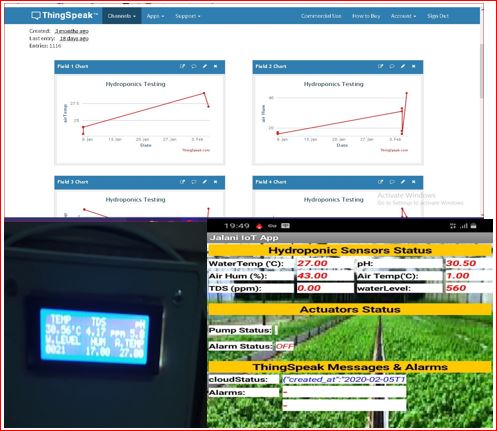Introduction

In today’s technologically advanced world, power outages can cause significant inconvenience and disruption. Whether it’s in our homes, offices, or industrial settings, having a reliable power backup system is crucial. In this blog post, we will explore how to design and build an IoT-based power backup system that ensures uninterrupted power supply and offers remote monitoring and control capabilities.
How to Design an IoT System?
Designing an IoT (Internet of Things) system involves several critical steps to ensure efficient, secure, and scalable operation. First, define the problem you aim to solve and identify the specific requirements of your system, including the types of data to be collected, processed, and analyzed. Next, choose appropriate hardware components such as sensors, actuators, and microcontrollers or embedded systems that can capture and transmit data. Selecting a suitable communication protocol (e.g., Wi-Fi, Bluetooth, Zigbee) is essential for ensuring reliable data transmission between devices.

Once the hardware is determined, design the software architecture, which includes both the firmware for the devices and the backend infrastructure. The backend can be cloud-based or on-premises, and it should be capable of handling data storage, processing, and analytics. Security measures, such as encryption, authentication, and regular updates, must be integrated into both the hardware and software to protect against potential cyber threats. Lastly, develop a user interface, whether it’s a mobile app, web application, or dashboard, to allow users to interact with the IoT system. Testing and iterating on your design will help you identify and fix issues before deployment, ensuring a robust and user-friendly IoT system.
What is IoT in Power System?
IoT in power systems refers to the integration of Internet of Things technologies to enhance the monitoring, control, and management of electrical power systems. By embedding sensors and smart devices into the power infrastructure, utilities and energy providers can collect real-time data on various parameters such as voltage, current, frequency, and power consumption. This data can then be transmitted to central systems for analysis and decision-making, enabling more efficient operation of the power grid.

The application of IoT in power systems offers numerous benefits, including improved grid reliability, enhanced energy efficiency, and reduced operational costs. For instance, IoT devices can help detect and locate faults in the grid more quickly, allowing for faster response and repair times. Additionally, real-time monitoring of energy consumption can enable dynamic pricing models and demand-response programs, where consumers are incentivized to reduce or shift their energy usage during peak periods. Overall, IoT technologies play a pivotal role in modernizing power systems and supporting the transition to smarter, more resilient energy infrastructures.
What is IoT Based Energy Management System?
An IoT-based energy management system (EMS) leverages Internet of Things technology to monitor, control, and optimize energy consumption within a building or facility. This system typically consists of a network of connected devices, such as smart meters, sensors, and actuators, that gather data on energy usage, environmental conditions, and the operational status of various electrical appliances and systems. The collected data is then analyzed to provide insights and recommendations for improving energy efficiency.

IoT-based EMS can automate energy management processes, such as adjusting lighting, heating, ventilation, and air conditioning (HVAC) systems based on occupancy and ambient conditions. By providing real-time visibility into energy consumption patterns, these systems help facility managers and homeowners make informed decisions to reduce energy waste and lower utility bills. Furthermore, IoT-based EMS can integrate renewable energy sources, like solar panels, and manage their interaction with the grid, ensuring optimal usage and storage. The adoption of IoT-based energy management systems is a significant step towards achieving sustainable energy practices and reducing carbon footprints.
What is Smart Power Management System Using IoT?
A smart power management system using IoT refers to an advanced approach to managing and optimizing the use of electrical power through the deployment of IoT technologies. This system integrates smart sensors, connected devices, and communication networks to monitor and control the flow of electricity in real-time. The primary goals of such a system are to enhance energy efficiency, reduce wastage, and ensure the reliability and stability of the power supply.
In a smart power management system, IoT devices collect data on various aspects of power consumption and distribution, including load patterns, power quality, and system performance. This data is then transmitted to a central platform where it can be analyzed to identify inefficiencies, predict demand, and implement automated control strategies. For example, the system can dynamically adjust the operation of electrical appliances, switch between energy sources, and manage energy storage to balance supply and demand effectively. Additionally, smart power management systems can facilitate the integration of renewable energy sources and support grid stability by responding to fluctuations in generation and consumption. By utilizing IoT technologies, these systems offer a sophisticated solution to modern energy challenges, promoting sustainable and intelligent energy use.
Understanding IoT-based Power Backup Systems

An IoT-based power backup system integrates the Internet of Things (IoT) technology with traditional power backup solutions. It allows users to monitor and control their backup power system remotely using a smartphone, tablet, or computer. This technology enables real-time monitoring of power status, battery levels, and automatic switching between the main power supply and backup power source.
Read Also…
- IoT Based Automatic Fish Pond Feeder
- IoT Based Health Monitoring System Using Arduino
- IoT Pump Control for Efficient Irrigation Systems
Components Required
To design and build an IoT-based power backup system, we will need the following components:
- Backup power source (12V battery)

This is a 12V lead-acid
- Microcontroller (Arduino)
- IoT module (ESP8266 )
- Sensors (to measure power status, battery levels, etc.)
- Relays (to switch between main power and backup power)
- Power supply unit
- Wiring and connectors
- Internet connection (Wi-Fi or GSM)
Design and Implementation
Here is a step-by-step guide on how to design and build an IoT-based power backup system:
Step 1: Determine Power Requirements

Start by assessing your power requirements. Calculate the power consumption of the devices you want to connect to the backup system. This will help you determine the capacity of the backup power source and the size of the battery needed.
Step 2: Choose the Microcontroller and IoT Module

Select a suitable microcontroller board (such as Arduino or Raspberry Pi) and an IoT module (such as ESP8266 or SIM800L) for communication and remote monitoring capabilities.
Step 3: Connect Sensors and Relays
Connect sensors to measure power status, battery levels, and other relevant parameters. Use relays to switch between the main power supply and the backup power source.
Step 4: Build the Power Supply Unit
Design and build a power supply unit that can handle the power requirements of the backup system. Ensure proper voltage regulation and protection mechanisms.
Step 5: Establish Internet Connectivity
Connect the IoT module to the internet using Wi-Fi or GSM, depending on the availability of network coverage in your area.
Step 6: Develop the Monitoring and Control Interface
Develop a user-friendly interface to monitor and control the power backup system remotely. This can be a web-based dashboard or a mobile application.
Step 7: Test and Fine-tune
Test the system thoroughly to ensure its reliability and functionality. Make any necessary adjustments or improvements based on the test results.
Read ESP32 Cam For Home Automation
Benefits of an IoT-based Power Backup System
Implementing an IoT-based power backup system offers several benefits:
- Remote monitoring and control: Users can monitor the power status and battery levels from anywhere, enabling timely actions and reducing downtime.
- Automatic switching: The system can automatically switch between the main power supply and backup power source, ensuring uninterrupted power supply.
- Efficiency and optimization: Real-time data allows users to optimize power consumption and identify potential issues before they become critical.
- Alerts and notifications: The system can send alerts and notifications regarding power outages, low battery levels, or any other system-related events.
Conclusion
Designing and building an IoT-based power backup system provides a reliable and efficient solution for managing power outages. By integrating IoT technology, users can remotely monitor and control their backup power system, ensuring uninterrupted power supply and minimizing downtime. With the right components and careful implementation, you can create a robust IoT-based power backup system tailored to your specific needs.
FAQs on IoT-based Power Backup System
1. What is an IoT-based power backup system?
An IoT-based power backup system utilizes Internet of Things (IoT) technology to monitor, control, and optimize power backup solutions such as uninterruptible power supplies (UPS) and battery systems. These systems are equipped with sensors and connected devices that collect real-time data on power consumption, battery status, and environmental conditions. The data is transmitted to a central platform where it can be analyzed to ensure efficient power management, timely maintenance, and rapid response to power outages.
2. How does an IoT-based power backup system work?
An IoT-based power backup system operates by integrating various smart components that communicate with each other. Sensors placed on the power backup devices monitor key parameters such as voltage, current, battery charge levels, and temperature. This information is sent to a cloud-based or on-premises server where it is analyzed. The system can send alerts for maintenance needs, automatically switch to backup power during an outage, and optimize power usage to extend the lifespan of the backup system. Users can also access this data through a web interface or mobile app to make informed decisions.
3. What are the benefits of using an IoT-based power backup system?
The primary benefits of using an IoT-based power backup system include enhanced reliability, improved energy efficiency, and better maintenance management. Real-time monitoring allows for early detection of potential issues, reducing downtime and preventing unexpected failures. Optimizing power usage helps in extending battery life and reducing energy costs. Additionally, remote monitoring and control capabilities provide convenience and allow for quick response during power outages, ensuring continuous power supply for critical operations.
4. Can IoT-based power backup systems integrate with renewable energy sources?
Yes, IoT-based power backup systems can integrate with renewable energy sources such as solar panels or wind turbines. These systems can intelligently manage the energy flow between the renewable sources, the main power grid, and the backup batteries. By monitoring the availability and usage of renewable energy, the system can optimize the storage and consumption of energy, ensuring that renewable sources are used efficiently and effectively, thereby reducing reliance on traditional power sources and lowering overall energy costs.
5. How secure are IoT-based power backup systems?
Security is a crucial aspect of IoT-based power backup systems. These systems implement various security measures such as data encryption, secure communication protocols, and authentication mechanisms to protect against unauthorized access and cyber threats. Regular software updates and patches are also essential to address vulnerabilities and enhance security. Users are encouraged to follow best practices, such as using strong passwords and keeping their devices and software up to date, to further ensure the security of the system.
6. What kind of maintenance is required for IoT-based power backup systems?
IoT-based power backup systems require regular maintenance to ensure optimal performance. This includes periodic checks of the hardware components, such as batteries and sensors, to identify any signs of wear or failure. Software updates should be applied regularly to keep the system secure and up to date with the latest features and improvements. The system’s data and performance metrics should be reviewed periodically to ensure that it is operating efficiently and any potential issues are addressed promptly.
7. How do IoT-based power backup systems handle power outages?
During a power outage, an IoT-based power backup system can automatically switch to backup power, ensuring a continuous supply of electricity to critical devices and systems. The IoT sensors monitor the power status in real-time and trigger the backup system when an outage is detected. Additionally, the system can send alerts to users about the outage and the status of the backup power, allowing for quick response and management of the situation. This automation and real-time monitoring help minimize downtime and maintain operational continuity.
8. Are IoT-based power backup systems cost-effective?
IoT-based power backup systems can be cost-effective in the long run due to their ability to optimize power usage, extend battery life, and reduce maintenance costs. Real-time monitoring and predictive maintenance help prevent unexpected failures and reduce the need for emergency repairs. Additionally, the efficient management of energy resources can lead to lower energy bills. While the initial investment in IoT technology may be higher, the long-term savings and improved reliability often justify the cost.
9. Can I access my IoT-based power backup system remotely?
Yes, most IoT-based power backup systems come with remote access capabilities. Users can monitor and control their systems through web interfaces or mobile applications from anywhere with an internet connection. This remote access allows users to receive real-time alerts, view system performance, and make adjustments as needed, providing convenience and peace of mind, especially for critical infrastructure that requires constant monitoring.
10. What industries can benefit from IoT-based power backup systems?
Various industries can benefit from IoT-based power backup systems, including healthcare, data centers, telecommunications, manufacturing, and residential settings. Any industry that relies on continuous power for critical operations can leverage these systems to enhance reliability, improve energy management, and reduce downtime. For example, hospitals can ensure that life-saving equipment remains operational during power outages, while data centers can protect against data loss and ensure continuous service availability.

